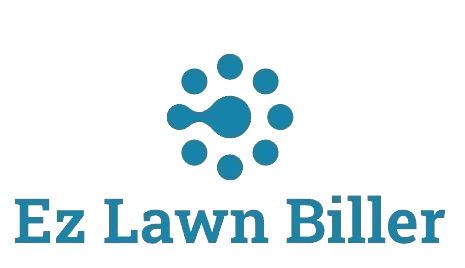Avoid These Common Optimize Routes Mistakes
Optimizing routes is essential for any lawn care business looking to improve efficiency, reduce costs, and enhance customer satisfaction. However, many companies make common mistakes that hinder their ability to maximize their routing strategies. This blog post will explore these pitfalls, providing insights into how to avoid them and streamline your lawn service operations effectively. By addressing these issues, your business can achieve significant improvements in service delivery and client retention.
In the fast-paced world of lawn care, time is money. Every minute spent on the road rather than servicing a lawn is lost revenue. Efficient route optimization can lead to substantial savings on fuel, labor, and time. However, many lawn care businesses overlook critical aspects that can lead to inefficiencies. In this article, we’ll delve into the common mistakes made while optimizing routes and how to rectify them.
Understanding the importance of an optimized route should be the first step for any lawn care provider. Poor planning can result in missed appointments, increased travel time, and dissatisfied customers. Let’s explore the common mistakes that hinder effective route optimization.
Neglecting Geographic Factors
One of the most significant mistakes in route optimization is ignoring geographic variables. Many lawn care companies fail to consider the layout of their service areas, which can drastically impact travel times and costs. For instance, routes may look efficient on paper but become impractical due to traffic patterns, road closures, or seasonal conditions.
To counter this, leverage advanced mapping technology and software that considers local traffic patterns and road conditions. This ensures that routes are not just theoretically efficient but practically viable. For example, if your team services multiple neighborhoods, understanding peak traffic times can help in planning routes that reduce idle time.
Moreover, consider incorporating a lawn service app that provides real-time data on traffic and weather conditions. This is crucial for making necessary adjustments to planned routes, enhancing service delivery, and improving customer satisfaction.
Failure to Utilize Technology
Another critical mistake is not fully utilizing available technology for route optimization. Many lawn care businesses still rely on outdated methods, such as paper maps or simple spreadsheets, which can lead to inefficiencies and increased operational costs. Embracing lawn billing software and service company software can streamline the process significantly.
Modern lawn service software can manage your fleet and optimize routes based on various factors, including service type, client locations, and time preferences. For instance, utilizing a lawn company computer program can help you automate scheduling and dispatching, ensuring that your team spends less time organizing and more time servicing clients.
Investing in a lawn service computer program also allows you to analyze previous jobs and client data. This information can inform your routing decisions moving forward, leading to more intelligent planning and execution. By using the right technology, your lawn care business can operate more efficiently and effectively.
Ignoring Service Time Variability
Many lawn care providers make the mistake of assuming that all service jobs take the same amount of time. This can lead to unrealistic scheduling and inefficient routing. Each job is unique, with varying requirements based on the size of the lawn, the complexity of the service, and the specific customer needs.
To optimize routes more effectively, it’s crucial to analyze historical job data. By tracking how long different services take on average, companies can create more accurate schedules and allocate resources better. This analysis allows teams to incorporate adequate travel time and service duration into their routing plans.
Using lawn service apps that track job completion times can provide valuable insights. By understanding the time commitment required for each type of service, businesses can adjust their routes accordingly, leading to improved efficiency and enhanced customer satisfaction.
Overcomplicating Route Plans
In the quest for efficiency, many businesses tend to overcomplicate their route plans. While it may be tempting to create highly intricate routing systems, this can lead to confusion and increased chances of errors. Instead, focus on creating straightforward and practical routes that your team can easily follow.
Simplifying the route not only enhances clarity but also reduces the cognitive load on drivers and technicians. This can lead to fewer mistakes and a higher level of service consistency. Aim for a balance between efficiency and simplicity when planning your routes.
Additionally, incorporating feedback from your team can help in identifying practical routing solutions. Their firsthand experience can shed light on potential pitfalls and areas for improvement, fostering better route planning in the future.
Not Considering Customer Preferences
Another common mistake is failing to consider customer preferences when optimizing routes. Every client has different needs, from preferred service times to specific requests regarding lawn care. Ignoring these factors can lead to missed appointments and diminished customer satisfaction.
To address this, communicate with your clients regarding their preferences and incorporate this feedback into your route planning. For instance, scheduling appointments during times that work best for clients can enhance your service quality and improve client relationships.
Using automated client management systems can facilitate this process by tracking client preferences and making scheduling recommendations accordingly. This approach not only optimizes your routes but also builds client loyalty and trust.
Neglecting Continuous Improvement
Finally, one of the most significant mistakes in route optimization is neglecting continuous improvement. The lawn care industry is dynamic, with changing conditions such as weather, customer needs, and local regulations. Failing to adapt and optimize routes regularly can lead to stagnation and inefficiency.
Establish a culture of continuous improvement within your organization. Regularly review routing strategies and solicit feedback from your team to identify areas for enhancement. By staying proactive and responsive to changes in your business environment, you can maintain a competitive edge in the lawn care industry.
In addition, utilizing reporting features available in lawn service software can help in analyzing trends and performance metrics over time. This data-driven approach allows your business to refine its routing strategies continually, ensuring optimal performance.
Conclusion
In summary, effective route optimization is critical for lawn care businesses aiming to maximize efficiency and client satisfaction. By avoiding common mistakes such as neglecting geographic factors, failing to utilize technology, and ignoring service variability, companies can enhance their operational capabilities.
It’s essential to maintain a customer-centric approach and foster a culture of continuous improvement. Ultimately, by employing the right tools and strategies, your lawn service can thrive while providing exceptional value to your clients.
Ready to take your lawn care business to the next level? Consider implementing a robust lawn billing software solution like EZ Lawn Biller, designed to streamline your processes and improve your service delivery. Don’t miss out on the opportunity to enhance your efficiency and client satisfaction!




